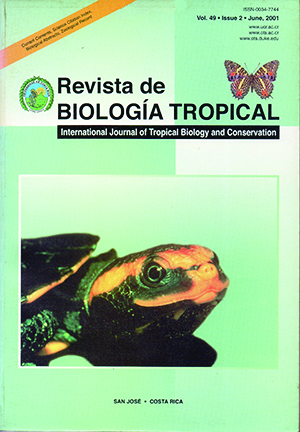Abstract
During March and April of 1996, I made field observations of the sedentary subspecies of grasshopper sparrow (Ammodramus savannarum cracens), in 600 points of the pine savannas of northeastern Nicaragua. Isolated individuals were found in the humid depressions, but breeding populations were located exclusively in areas that had suffered a recent fire. Territorial behavior varied in intensity apparently as a function of territory size: the most aggressive males were those trying to defend smaller territories in populations close to Miskito villages, where most of the fires occur. In contrast to what is happening in other parts of Central America, the Nicaraguan grasshopper sparrow may be indirectly protected from extinction by the Miskito’s traditional fire practices.Comments

This work is licensed under a Creative Commons Attribution 4.0 International License.
Copyright (c) 2001 Revista de Biología Tropical
Downloads
Download data is not yet available.


